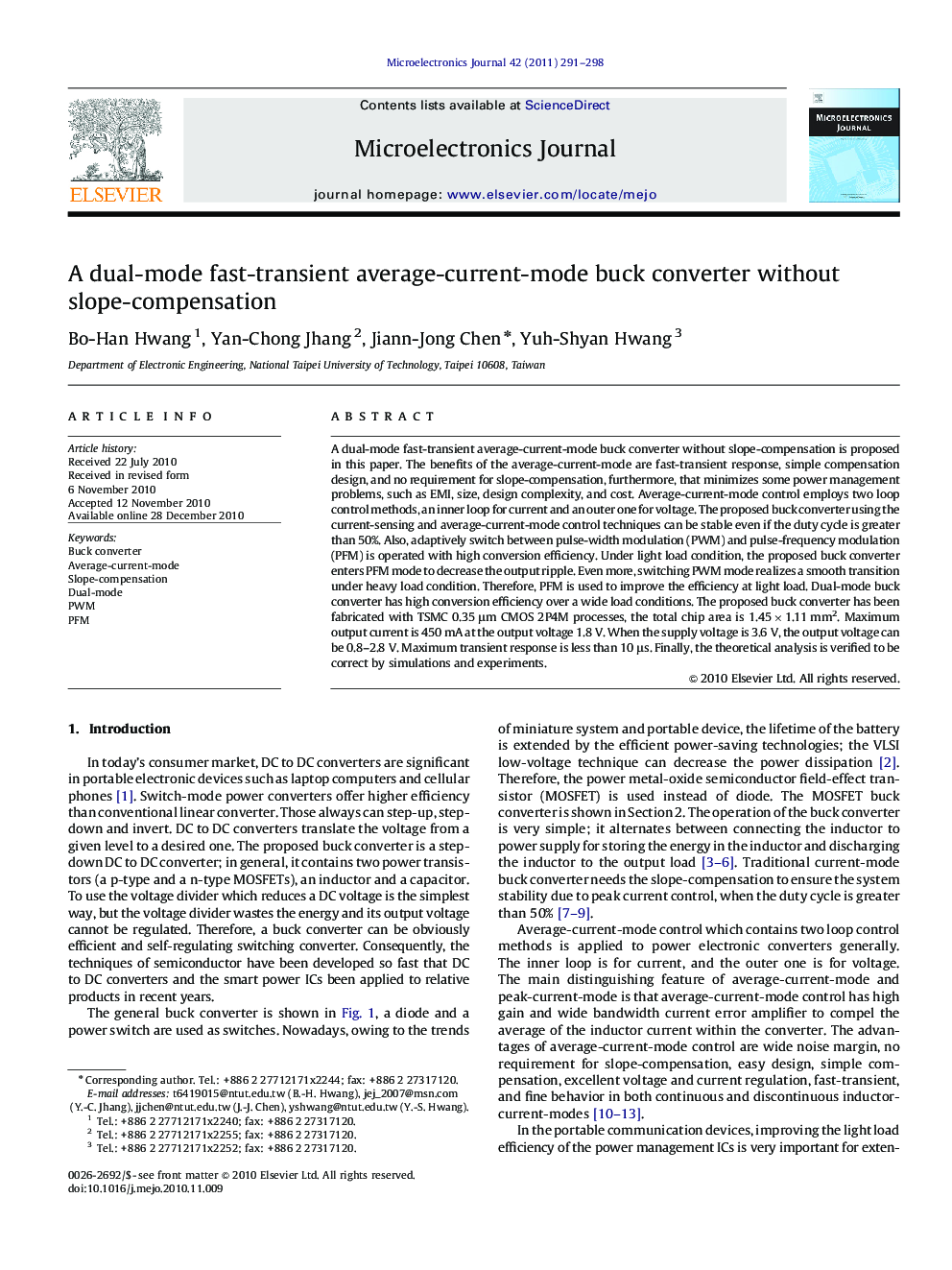| Article ID | Journal | Published Year | Pages | File Type |
|---|---|---|---|---|
| 10364440 | Microelectronics Journal | 2011 | 8 Pages |
Abstract
A dual-mode fast-transient average-current-mode buck converter without slope-compensation is proposed in this paper. The benefits of the average-current-mode are fast-transient response, simple compensation design, and no requirement for slope-compensation, furthermore, that minimizes some power management problems, such as EMI, size, design complexity, and cost. Average-current-mode control employs two loop control methods, an inner loop for current and an outer one for voltage. The proposed buck converter using the current-sensing and average-current-mode control techniques can be stable even if the duty cycle is greater than 50%. Also, adaptively switch between pulse-width modulation (PWM) and pulse-frequency modulation (PFM) is operated with high conversion efficiency. Under light load condition, the proposed buck converter enters PFM mode to decrease the output ripple. Even more, switching PWM mode realizes a smooth transition under heavy load condition. Therefore, PFM is used to improve the efficiency at light load. Dual-mode buck converter has high conversion efficiency over a wide load conditions. The proposed buck converter has been fabricated with TSMC 0.35 μm CMOS 2P4M processes, the total chip area is 1.45Ã1.11 mm2. Maximum output current is 450 mA at the output voltage 1.8 V. When the supply voltage is 3.6 V, the output voltage can be 0.8-2.8 V. Maximum transient response is less than 10 μs. Finally, the theoretical analysis is verified to be correct by simulations and experiments.
Keywords
Related Topics
Physical Sciences and Engineering
Computer Science
Hardware and Architecture
Authors
Bo-Han Hwang, Yan-Chong Jhang, Jiann-Jong Chen, Yuh-Shyan Hwang,
